I am currently doing a project on morphology of filamentous fungi during batch fermentation (Yes, I am not a software engineer.. Biotech). Where I am taken pictures of the morphology in a petri dish. I am developing a "fast" method to describe the pellets (small aggregates of fungi) that occurs during the fermentation. To do this I am writing a code in MatLab. Depending on the color of the pellets (light or dark) the pictures are taken on differen backgrounds, black or white. I am inverting the picture if the mean gray value is below 70 to distinguish between backgrounds.
Pictures: White background Dark background
I have several problems:
- Detecting the edge of the petri dish so it won't be regarded as an object (Currently done with the edge('log',) function). The edge is detected, but i miss some parts, think because of the lower light in top.
- Proper thresholding inside the dish
- Detection of pellets - right now it is done by a combination of running through each color channel, but might be done with some blob detection?
Does anybody have some inputs?
My code is as following:
close all
clear all
clc
%Empty arrays to hold data
metricD=[];
areaD=[];
perimeterD=[];
% Specify the folder where the files live.
myFolder = pwd;
% Check to make sure that folder actually exists. Warn user if it doesn't.
if ~isdir(myFolder)
errorMessage = sprintf('Error: The following folder does not exist:\n%s', myFolder);
uiwait(warndlg(errorMessage));
return;
end
% Get a list of all files in the folder with the desired file name pattern.
filePattern = fullfile(myFolder, '*.jpg'); % Change to whatever pattern you need.
theFiles = dir(filePattern);
% Show debugging plots
plotFig = 0;
% parameters that can be tuned
% how many colors channels we minimum want to see a spore in
% e.g. set to 1 for image "P. f Def C.tif"
labelcutOff = 1;
% remove areas larger than
removeLargerthan = 500000;
for k = 1 : length(theFiles)
baseFileName = theFiles(k).name;
fullFileName = fullfile(myFolder, baseFileName);
%% reading as an image array with im
I = imread(fullFileName);
% convert to grayscale
Ig = rgb2gray(I);
if plotFig
figure;imagesc(I)
figure;imagesc(Ig)
end
mm=mean(mean(Ig));
if mm < 70
I=imcomplement(I);
Ig = imcomplement(Ig);
end
% BLOB DETCTION
% h = fspecial('log', [15 15], 2);
% imLOG = imfilter(Ig, h);
% figure;imagesc(imLOG)
%% find petridish by edges and binary operations
% HACK - NOT HOW IT SHOULD BE DONE
Ig = wiener2(Ig,[5 5]);
imEdge = edge(Ig,'log');
circle = bwareaopen(imEdge,50);
circle = imclose(circle,strel('disk',30));
circle = bwareaopen(circle,8000);
% circle = imfill(circle,'holes');
circle = bwconvhull(circle);
circle = imerode(circle,strel('disk',150));
if plotFig
figure;imagesc(circle)
end
%% Get thresholds inside dish using otsu on each channel
imR = double(I(:,:,1)) .* circle;
imG = double(I(:,:,2)) .* circle;
imB = double(I(:,:,3)) .* circle;
thresR = graythresh(uint8(imR(circle))) *max(imR(circle));
thresG = graythresh(uint8(imG(circle))) *max(imG(circle));
thresB = graythresh(uint8(imB(circle))) *max(imB(circle));
if plotFig
figure;imagesc(imR)
figure;imagesc(imG)
figure;imagesc(imB)
end
%% classify inside dish
% check if it should be smaller or larger than
if sum(imR(circle) < thresR) > sum(imR(circle) > thresR)
labelR = imR > thresR;
else
labelR = imR < thresR;
end
if sum(imG(circle) < thresG) > sum(imG(circle) > thresG)
labelG = imG > thresG;
else
labelG = imG < thresG;
end
if sum(imB(circle) < thresB) > sum(imB(circle) > thresB)
labelB = imB > thresB;
else
labelB = imB < thresB;
end
if plotFig
figure;imagesc(labelR)
figure;imagesc(labelG)
figure;imagesc(labelB)
end
labels = (labelR + labelG + labelB) .* circle;
labels(labels < labelcutOff) = 0;
labels = imfill(labels,'holes');
labels = bwareaopen(labels,30);
if plotFig
figure;imagesc(labels)
end
%% clean up labels
labelBig = bwareaopen(labels,removeLargerthan);
labels = labels - labelBig;
if plotFig
figure;imagesc(labels)
end
BN = labels;
%% old script
stats = regionprops(BN,'Basic');
obj2 = numel(stats);
[B,L] = bwboundaries(BN,'holes');
figure
% imshow(label2rgb(L, @jet, [.5 .5 .5]))
imshow(I)
hold on
title(baseFileName)
for j = 1:length(B)
boundary = B{j};
plot(boundary(:,2), boundary(:,1),'w','LineWidth',2)
end
%region stats
stats = regionprops(L,'Area','Centroid');
%Threshold for printing in end
threshold = 0.2;
%Conversion factor pixel to cm
conversionF=9/2125;
% loop over the boundaries
for j = 1:length(B)
% obtain (X,Y) boundary coordinates corresponding to label 'j'
boundary = B{j};
% compute a simple estimate of the object's perimeter
delta_sq = diff(boundary).^2;
perimeter = sum(sqrt(sum(delta_sq,2)));
perimeterD(j,k)=perimeter*conversionF;
% obtain the area calculation corresponding to label 'k'
area = stats(j).Area;
areaD(j,k)=area*conversionF^2;
% compute the roundness metric
metric = 4*pi*area/perimeter^2;
metricD(j,k)=metric;
% display the results
metric_string = sprintf('%d. %2.2f', j,metric);
text(boundary(1,2)-50,boundary(1,1)+23,metric_string,'Color','k',...
'FontSize',14,'FontWeight','bold');
end
drawnow; % Force display to update immediately.
end
%Calculating stats
areaM=mean(areaD);
pM=mean(perimeterD);
metricD(metricD==Inf)=0;
mM=mean(metricD);
